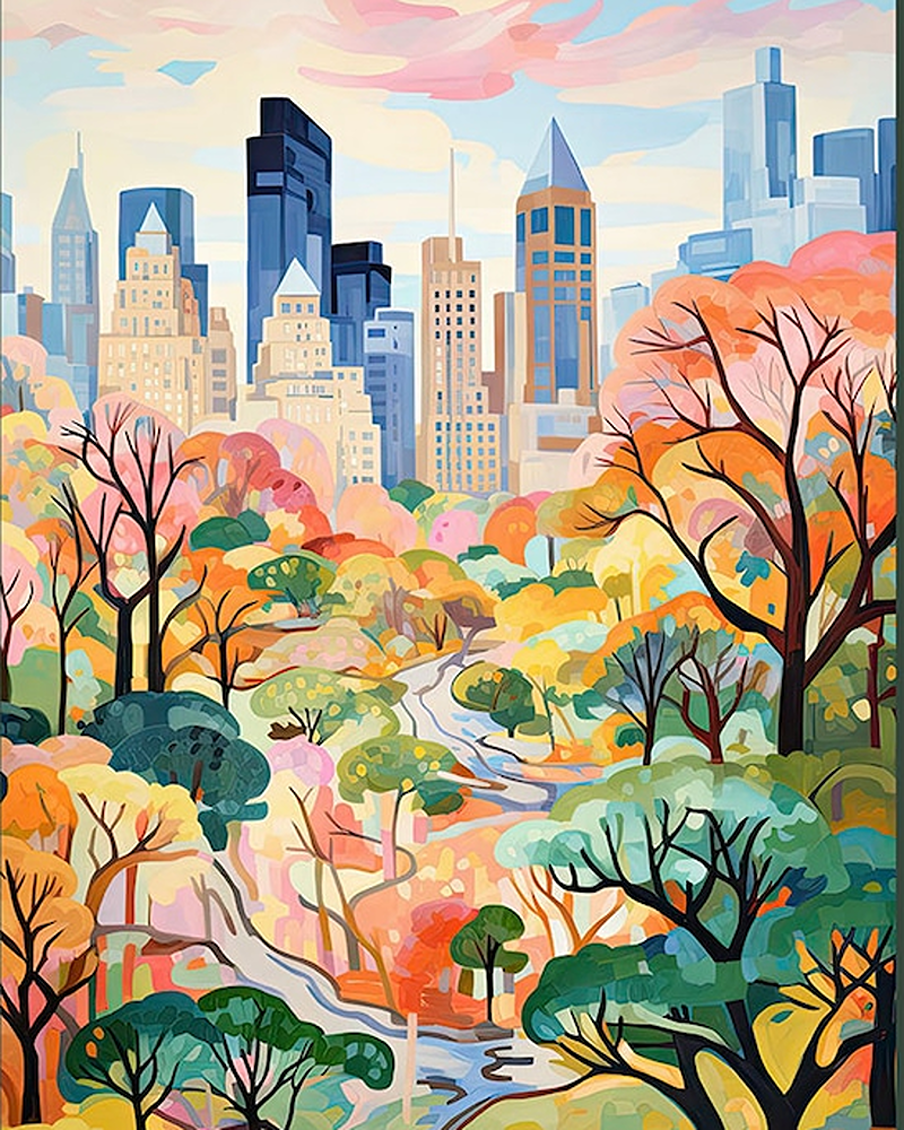
Years ago, TV cop shows would suggest that if you jogged through Central Park, you would likely get mugged, raped or murdered. It used to be dangerous, but now it’s pretty safe thanks to good policies and excellent town planning.
Park planners can read up on toxic plants, flowers, trees and mulch to avoid. Keep dogs away from wildfowl near ponds (and put notices up so people don’t throw stale, mouldy or crusty bread – nor buttered bread, as it smears on feathers, affecting waterproofing/insulation).
The interesting thing about Central Park is that it’s totally manmade (yet just like our Norfolk Broads, it is beautiful to look at and provides homes to birds and wildlife, and a wonderful space to relax). It’s also huge (bigger than Monaco) and includes 58 miles of walking routes along with many boating lakes. The park has over 18,000 trees and 10,000 benches. The park is also home to most of New York City’s wildlife, from 300 bird species to bats, chipmunks and racoons.
Richmond Park is littered, Central Park is not
London’s Richmond Park is around three times bigger than Central Park. This is a natural park of ancient woods, rolling hills and open grasslands, and mostly known for its deer. Yet often the public get too close, despite being warned to stay away from rutting deer in autumn season.
A short while back, the Royal Parks issued distressing photos, showing just what dropped litter is doing to the local wildlife. Animals were caught up in plastic bags, beer rings and party balloons, and some even had their homes destroyed by BBQ fires. The Royal Parks picked up 157 double-decker bus weight in litter in just one year, costing over £1 million for them to clean all eight parks. Some of the litter found included:
- A plastic bag wrapped around a majestic stag’s mouth
- A hedgehog entangled in a party balloons
- A cormorant (fishing bird) with a plastic beer ring around its neck.
Other litter found included pizza boxes (you can only recycle the unused bits, greasy parts have to be binned), poop bags, glass bottles and disposable face masks (choose reusable and always ‘snip the strips’ after use of those blue ones to stop entanglement).
Richmond Park particularly called out a few cyclists who litter blue gel, which is then eaten by creatures (a few deer even died, when they found and ate it). Around 5 deer annually are estimated to die each year from eating rubbish thrown away by humans.
Yet all it takes is a few minutes to walk to the nearest litter bin (all the royal parks have them). Littering is in offence, so report to Fix My Street who can order councils to clear it up or councils can serve Litter Abatement Orders or fines to private litter culprits.
In New York, Central Park is far more stringent and has little litter, despite having over 40 million visitors each year. It makes the effort to invest in good bins placed on the perimeters (to discourage rats in the park) and routes are designed to empty the bins, without disturbing park visitors. Their bins (an upgrade from steel drums) can remain outdoors year-round and are difficult for rodents to climb inside. Made from recycled aluminium, they are emptied by a fleet of quiet electric vehicles.
all parks need better wildlife-friendly lighting
One area that Central Park doesn’t do well is to stop light pollution, which affects birds and wildlife. All parks are best using wildlife-friendly solar lights which have an orange (rather than a blue hue). Write to your councillors, asking them to install wildlife-friendly lighting. Light pollution can cause birds to wake up too early and breed at the wrong times, upset migration routes as creatures ‘follow the lampposts’ rather than the moon, and kills many important insects who flock to blue light.
moving on from horse-drawn carriages
Although it’s an age-old tradition, campaigners want the horse and carriage rides to stop in Central Park. Although no doubt the carriage riders treat their horses well, many are spooked in traffic and several have been injured or killed. A local nonprofit wants the horses to go to sanctuaries and have designed a beautiful vintage-style electric car that is cheap and clean to run, and would give more profits to drivers. Tourists would still receive a nice ‘tourist ride’, but not at the expense of animal welfare.






